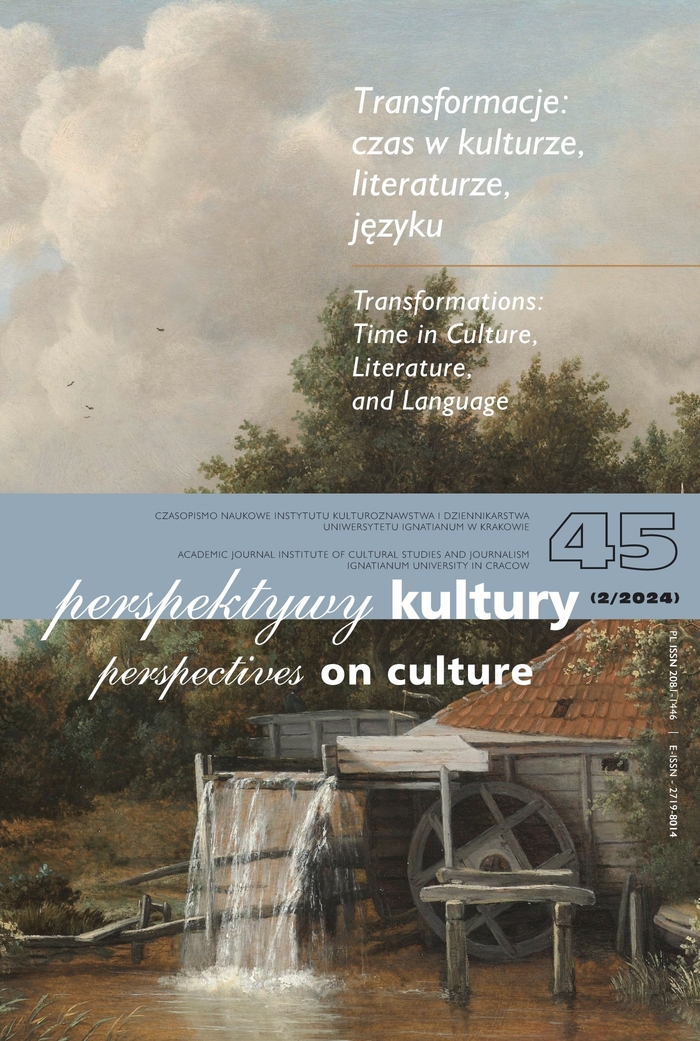Transformations of the Classics in the 21st Century
the Case of L.M. Montgomery’s Anne of Green Gables
Abstract
The literary classics is timeless by definition but paradoxically it changes in time in its countless adaptations into different media. One of the interesting phenomena of the 21st century is the popularity of graphic novels which are based on the classic. Examples can be multiplied. If the English classic is taken into account, several adaptations of the novels by Jane Austen, Joseph Conrad, Charles Dickens, C.S. Lewis, Virginia Woolf may be mentioned among the others. My research is focused on one of the classical novels by the Canadian writer L.M. Montgomery Anne of Green Gables (1908) and the graphic novel (with the same title) based on it (with the same title) by M. Marsden and B. Thummler (2017). This is a case study presenting the transformation of the classic novels into graphic ones and taking into consideration especially times when the novels were written and what has been changed in their graphic adaptations of the 21st century. The main research questions are: how the times are represented both in the original novel and its contemporary transformation? How the setting, characters and plot are transformed (if they are)? The aim of the paper is to analyse all these transformations, define their main features and to find out their influence on the original message of the novel.
References
Ahmansson, G. (1991). A Life and Its Mirrors: A Feminist Reading of L. M. Montgomery’s Fiction. Uppsala.
Baetens, J., Frey, H. (2014). The Graphic Novel: An Introduction. Cambridge.
Birek, W. (2009). Powieść graficzna. Zagadnienia Rodzajów Literackich, z.1-2. 248.
Doody, M.A., Barry W. E. (1997). Literary Allusion and Quotation in „Anne of Green Gables”. W: Montgomery, L. M., The Annotated Anne of Green Gables. New York, Oxford, 457-462.
Fingeroth, D. (2008). The Rough Guide to Graphic Novels. London.
Hescher, A. (2016). Reading Graphic Novels. Genre and Narration. Berlin/Boston.
Konefał, J. S. (2015). Powieści graficzne. Leksykon. Warszawa.
Kukkonen, Karin (2013). Studying comics and graphic novels. Chichester, West Sussex.
Marsden, M., Thummler, B. (2017). Anne of Green Gables – a graphic novel. Kansas City, Missouri.
McIntosh, A., Gagnon, C., Besner, N. (2009), Anne of Green Gables. W: The Canadian Encyclopedia, https://www.thecanadianencyclopedia.ca/en/article/anne-of-green-gables, dostęp: 13.11.2023.
Montgomery, L. M. (1997) The Annotated Anne of Green Gables. New York, Oxford.
Montgomery, L. M. (2022) Anne z Zielonych Szczytów, przeł. A. Bańkowska. Warszawa.
Rządkowski, M. (2014). From comic strips to the graphic novel: landmarks in the development of the form W: O. Glebova (red.), Genre in Contemporary English Studies. Częstochowa, 109-121.
Szyłak, J. (2016). Coś więcej, czegoś mniej. Poszukiwania formuły powieści graficznej w komiksie 1832-2015. Poznań.
Tuszyńska, K. (2015). Narracja w powieści graficznej. Warszawa.
Williams, Paul (2020). Dreaming the Graphic Novel: the Novelization of Comics. New Brunswick.
Wróblewski, M. (2016). Powieść graficzna. Studium gatunku w perspektywie kognitywistycznej, Łódź.
Copyright (c) 2024 Perspectives on Culture

This work is licensed under a Creative Commons Attribution-NoDerivatives 4.0 International License.
Autor, zgłaszając swój artykuł, wyraża zgodę na korzystanie przez Wydawnictwo Uniwersystet Ignatianum z utworu na następujących polach eksploatacji:
- utrwalania utworu w formie papierowej, a także na nośniku cyfrowym lub magnetycznym;
- zwielokrotnienia utworu dowolną techniką, bez ograniczenia ilości wydań i liczby egzemplarzy;
- rozpowszechniania utworu i jego zwielokrotnionych egzemplarzy na jakimkolwiek nośniku, w tym wprowadzenia do obrotu, sprzedaży, użyczenia, najmu;
- wprowadzenia utworu do pamięci komputera;
- rozpowszechniania utworu w sieciach informatycznych, w tym w sieci Internet;
- publicznego wykonania, wystawienia, wyświetlenia, odtworzenia oraz nadawania i reemitowania, a także publicznego udostępniania utworu w taki sposób, aby każdy mógł mieć do niego dostęp w miejscu i czasie przez siebie wybranym.
Wydawca zobowiązuje się szanować osobiste prawa autorskie do utworu.





